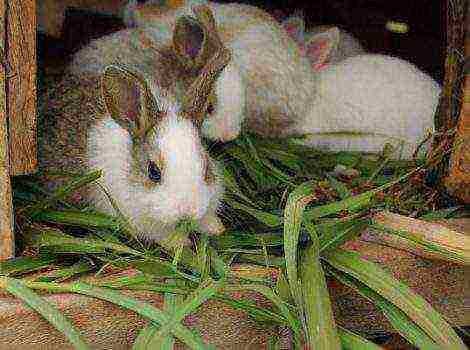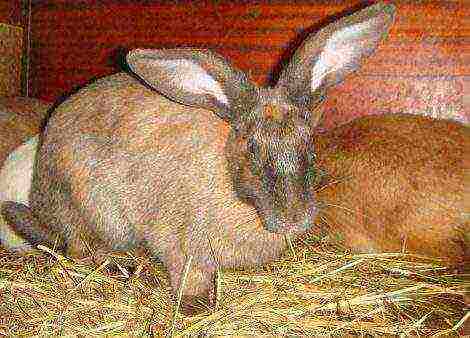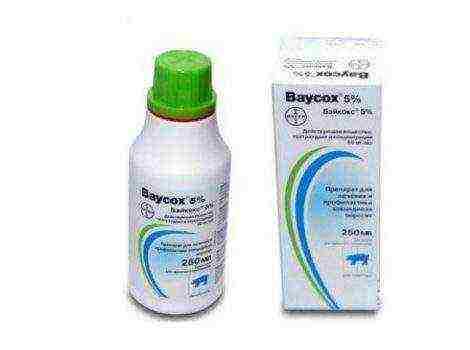How and what to feed a decorative rabbit at home?
If you have a desire to purchase a decorative rabbit for keeping in your own apartment, it should be noted that this is not only a cute and playful animal, but also a pet that will require careful care.
In order for an eared one to live a long and happy life, you need to take care of his health, and also know how to feed a decorative rabbit.
What do indoor decorative rabbits eat?
So what do decorative rabbits eat? By nature, rabbits eat plant foods. If the diet is not followed, the animals in question begin to lose weight, in some cases this is fatal. Overfeeding is also dangerous for the body of the eared, when overweight, they begin to suffer from various diseases, so their diet must be carefully selected by the owner.
Food for decorative rabbit breeds is very different from food that regular rabbits eat. This is due to the weak immunity of pets, as well as the delicate stomach. If animals raised on a farm can eat moist plant food without harm to health, gnaw on a tree, then their decorative counterparts are often deprived of this opportunity. They need to be given special solid food for grinding their teeth.
The diet of small decorative rabbits, which need a special diet, is especially different. Animals are fed at least twice a day, including dried bread, high-quality hay, rolled oats or wheat flakes in the diet. As for carrots, such a product is given in small quantities. There should be a drinking bowl with water in the trough.
In summer, the houses of dwarf rabbits can be fed with clover and dandelions; corn leaves and cereal grasses are also used from green fodder. Note that the collected plants are disinfected in a weak solution of potassium permanganate, then they are dried in the sun. Fresh, juicy grass is not introduced into the diet of babies, due to the possibility of an upset stomach, so the greens need to be dried in the sun.
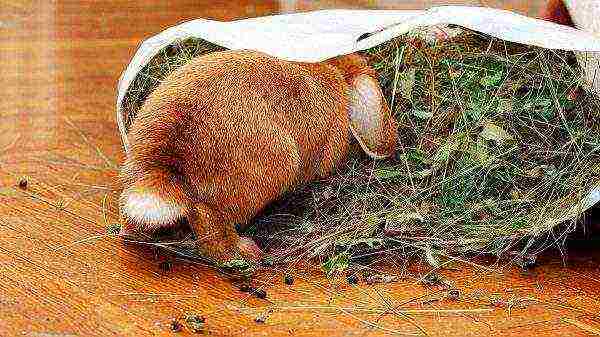
In general terms, the diet of a decorative rabbit should consist of the following products:
- concentrated feed in the form of special compound feed, rolled oats, wheat flakes;
- vegetables;
- solid feed (hay, raspberry, lilac, willow branches). Such food will help grind your teeth;
- mineral supplements.
How to feed a dwarf rabbit at home?
As we have already said, all breeds of decorative rabbits need special nutrition. The diet of these animals should include various types of food. Digestion is accelerated in animals, so they must receive food constantly.
When pets starve, intestinal stagnation or fermentation of food residues is formed, which is often fatal. According to experts, the diet of pets should contain solid and juicy feed, greens, and fiber.
So what and how to feed a decorative rabbit at home? Despite the fact that the eared can eat all day, food should be limited to two times a day (in the morning and evening). First, the pets are given grain feed or compound feed, after eating hay.
During the day, the animals are given hay and fresh vegetables, at night, the feeders are filled with high-quality hay. Now let's describe the menu of decorative rabbits in more detail.
Roughage
This type of food forms the basis of the eared diet. This food for ornamental rabbits contains tree branches such as birch, willow, acacia and alder, as well as quality hay. The branches of garden trees should be given carefully in small doses., but hay from forbs can be constantly present in the feeder of the animals.
In winter, pets can be fed branches and needles of pine and spruce, juniper, but needles are not often given. It should also be understood that birch wood is considered a diuretic, while oak and alder are considered bonding agents.
You may also be interested in the following rabbit-themed articles:
- How to properly care for rabbits?
- How to feed rabbits correctly and what kind of food?
- How to use Solikox?
Juicy feed
The products in question should be received by rabbits throughout the year. As we already said, beets and cabbage leaves are harmful to eared ones, but the following list of foods can be included in their diet:
- Apples;
- Potatoes and radishes;
- Pears;
- Zucchini;
- Carrot;
- Cucumbers.
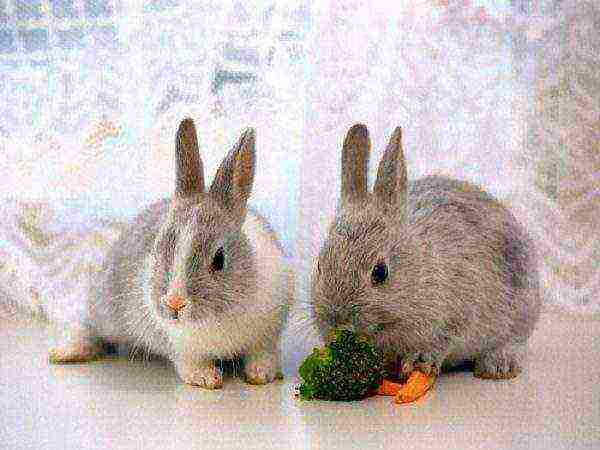
Each of the types of food described is given in small doses. At the same time, they look after the faeces of animals. For example, bananas are fed a teaspoon once a week, and citrus fruits and plums are generally excluded from the diet.
From citrus fruits, you can only feed tangerine, and even then one slice in two weeks.
Melons and watermelons will not please all pets, although they can also be given in small doses and infrequently (with the exception of pregnant females).
Concentrates and compound feed
From concentrated feeds in the diet of rabbits include Hercules and oats. Compound feeds should contain vitamins and proteins, as well as vitamins necessary for the normal growth of animals.
The specified food is bought in specialized stores. The detailed composition of the compound feed for rabbits is as follows:
- 28-30% herbal flour... It is best if clover and alfalfa are used as the main plants. It has been noticed that some unscrupulous manufacturers add weeds to the feed and enrich the mixture with vitamins;
- The minimum proportion of cereals (wheat or oats are used here) should be 20%. It should be borne in mind that all types of grain should not be treated with pesticides;
- Amount of barley or corn in compound feed, it should also be at the level of 20%;
- An important component is considered sunflower meal (up to 13% of the total mass). This ingredient is responsible for the development of the animal's coat;
- The remaining 2-4% take nutritional yeast, table salt, fish and meat and bone meal.
Rabbit greens
From greens, decorative rabbits can be given the following types of herbs: wheatgrass, alfalfa, dandelions and clover. The animals in question happily eat tansy, chamomile and mouse peas, although the supply of such food should be limited. Note that before serving food, it is recommended to dry all of these types of herbs in the sun.
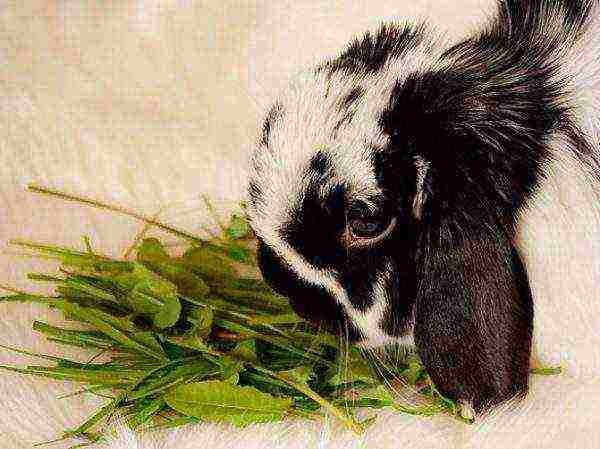
The following types of greens are not recommended for a rabbit:
- Jaundice and raven eye negatively affect the cardiovascular system of the animal;
- Henbane, buttercup, dope, celandine lead to poisoning of the eared;
- Goldenrod and lupine contribute to liver dysfunction.
Fertilizing with vitamins and minerals
As an additional source of vitamins, you can use special factory-made feed. Special granules are placed in cages for decorative rabbits, which contain trace elements such as calcium and potassium.
Salt is used as an additional additive to the described diet.... This mineral stimulates the animal's appetite, improves the quality of the fur. Calcium in the form of chalk helps to strengthen the skeleton of young rabbits.
Food contraindicated for consumption
As we have already said, freshly cut grass is considered harmful to the rabbit, as well as some types of plants, for example, dope, henbane, celandine, hemlock. From vegetables, animals should not be given cabbage leaves and beets. Eared ones should not be fed sausage, chips and sweets, other confectionery products.
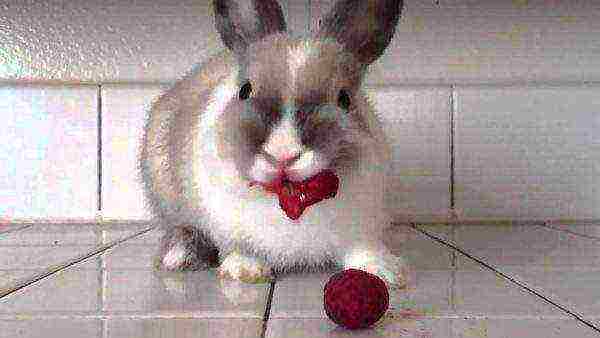
Mineral stones and treats for grinding teeth
From mineral stones, pieces of chalk and iodized salt, special granules containing microelements necessary for the development of the animal, are placed in the rabbit's cage. Grinding of the eared teeth will be facilitated by branch feed, white bread croutons, as well as special grain sticks. Some breeders use toys made of paper or wood for this purpose.
From the above, we can conclude that decorative rabbits are considered quite capricious animals, however, with a certain work experience, knowledge of the nuances of feeding, these pets will delight you for more than one year.
And finally, a short video:
